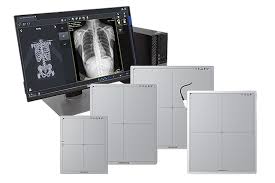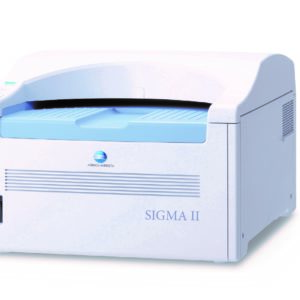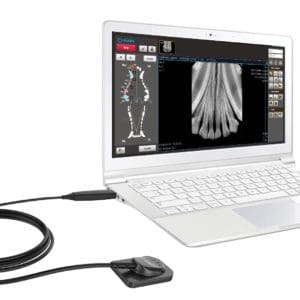Regius Model 110- Ko...
Del MedicalThe REGIUS Model 110 is a high performance single bay CR system that can process up to 76 plates per hour (14″x17″). process up to 76 sheets/hour, achieving a high-speed processing cycle of 47 seconds/plate. This is the smallest, top-of-the-line Regius model with both compact design and high performance. The Regius Model 110 features an astonishingly small footprint of only 0.27 m² !
The two way setting method allows selection of two patterns of layout depending on the facilities space limitations. These proposals prove that we truly understand the customer’s user environments, and that the Regius Model 110 is adaptable.
The Regius Model 110 allows for easy operation with the simple installation of an exposed cassette. The height of the cassette slot is 710 mm. Easy cassette installation is achieved. Continue to use existing cassettes for the Regius 170/190 as exposure cassettes.
CS-7 has multiple function which provides you useful workflow.
– Control AeroDR detectors and KonicaMinolta CR devices.
– Send patient images to PACS and Dry Imagers.
– Obtain examination information from RIS and send back each results.
– Link up X-ray exposure condition with X-ray console.
– Write patient image on CD/DVD with DICOM, PDI and JPEG format.
Description
REGIUS Model 110:
Exposure Sizes:
– 14 x 17″ (35 x 45 cm)
– 14 x 14″ (35 x 35 cm)
– 10 x 12″ (24 x 30 cm)
– 8 x 10″
– 18 x 24 cm
– 15 x 30 cm
Maximum Resolution: 2010 x 2446 (14 x 17″)
Time required for IP feed/ load: Min. 47 sec. (14 x 17″)
Processing capacity: Up to 60 IPs/hr
Width: 29.1″ (74 cm)
Depth: 14.4″ (36.5 cm)
Height: 29.4″ (75 cm)
Weight: Approx. 220 lbs.
Power requirements: AC 100-240 V ±10%; 50/60 Hz; Approx. 700 VA or less
CS-7 Control Station:
DICOM services:
DICOM Storage SCU
DICOM Print SCU
DICOM Modality Worklist Management
DICOM Storage Commitment SCU
Maximum resolution:
-Up to 2 DICOM Store Plus 1 Backup
-Up to 1 DICOM Print Plus 1 Backup
Image processing:
Automatic gradation processing (G processing)
Frequency processing (F processing)
Equalization processing (E processing)
Hybrid Processing (H processing)
Image storage capacity:
Approx. 5,000 images








